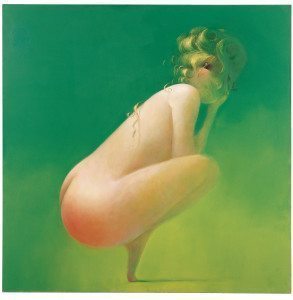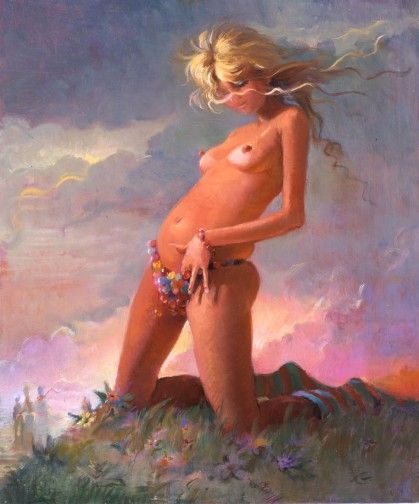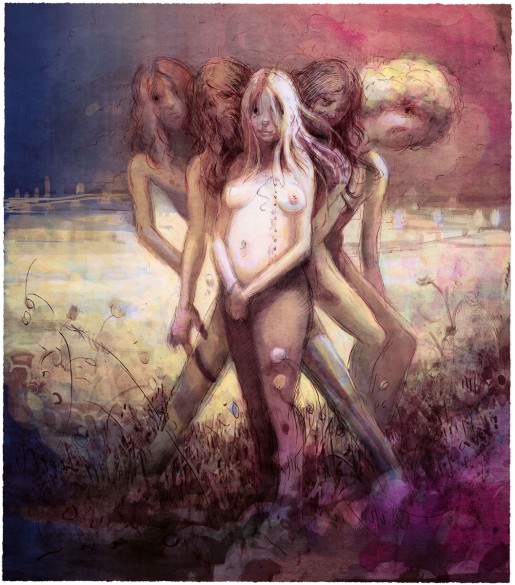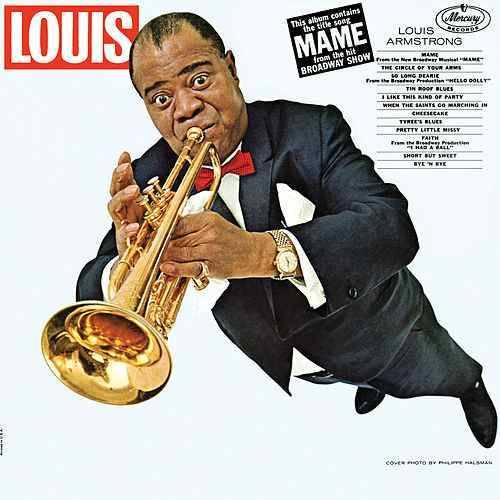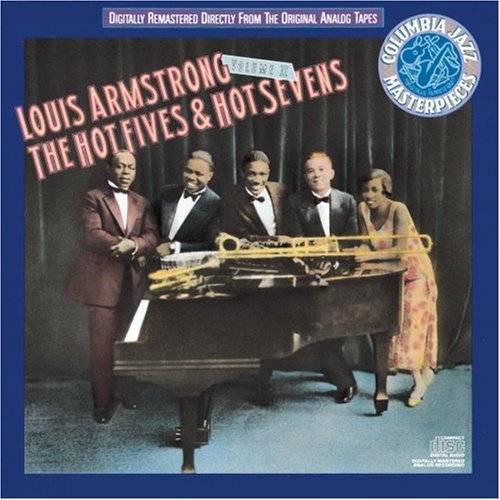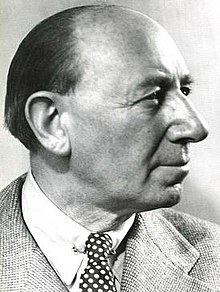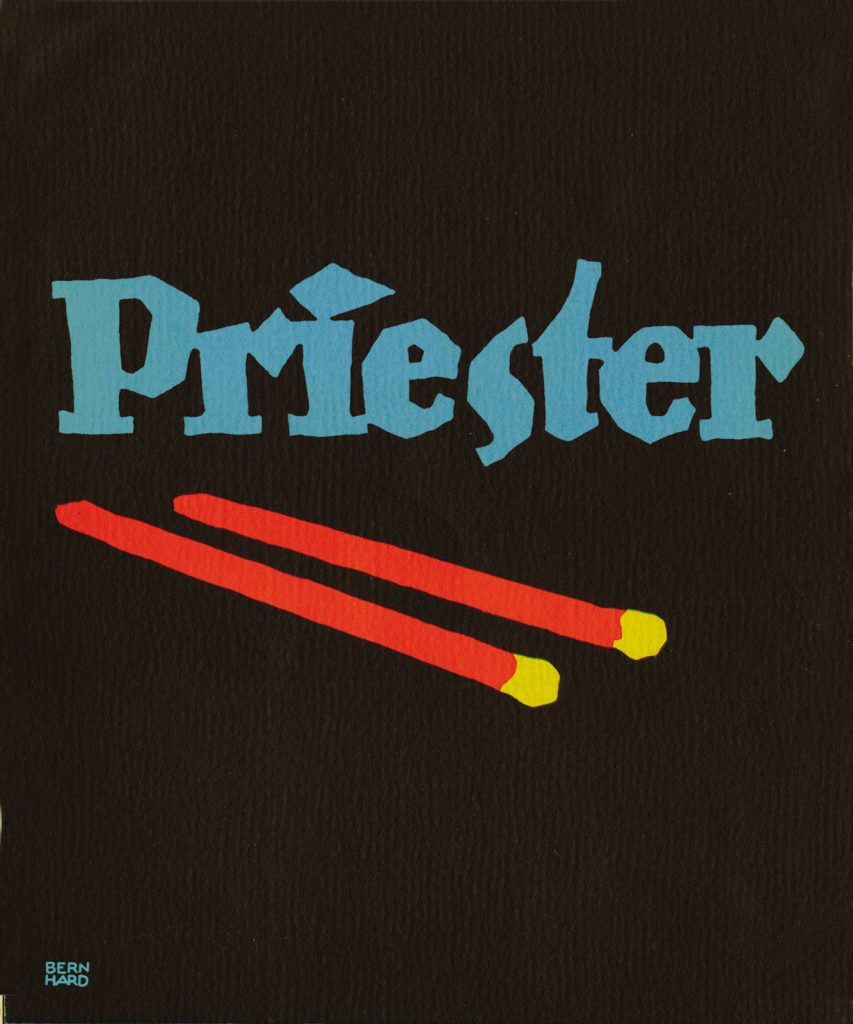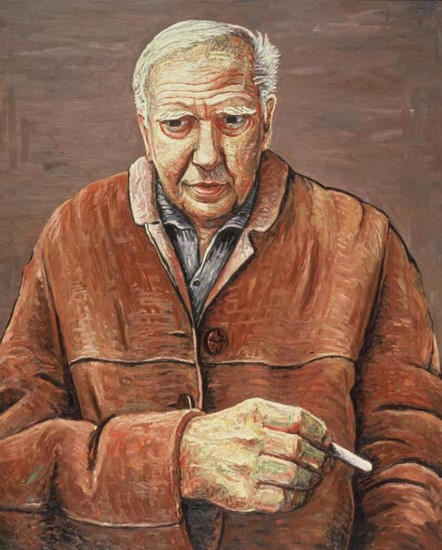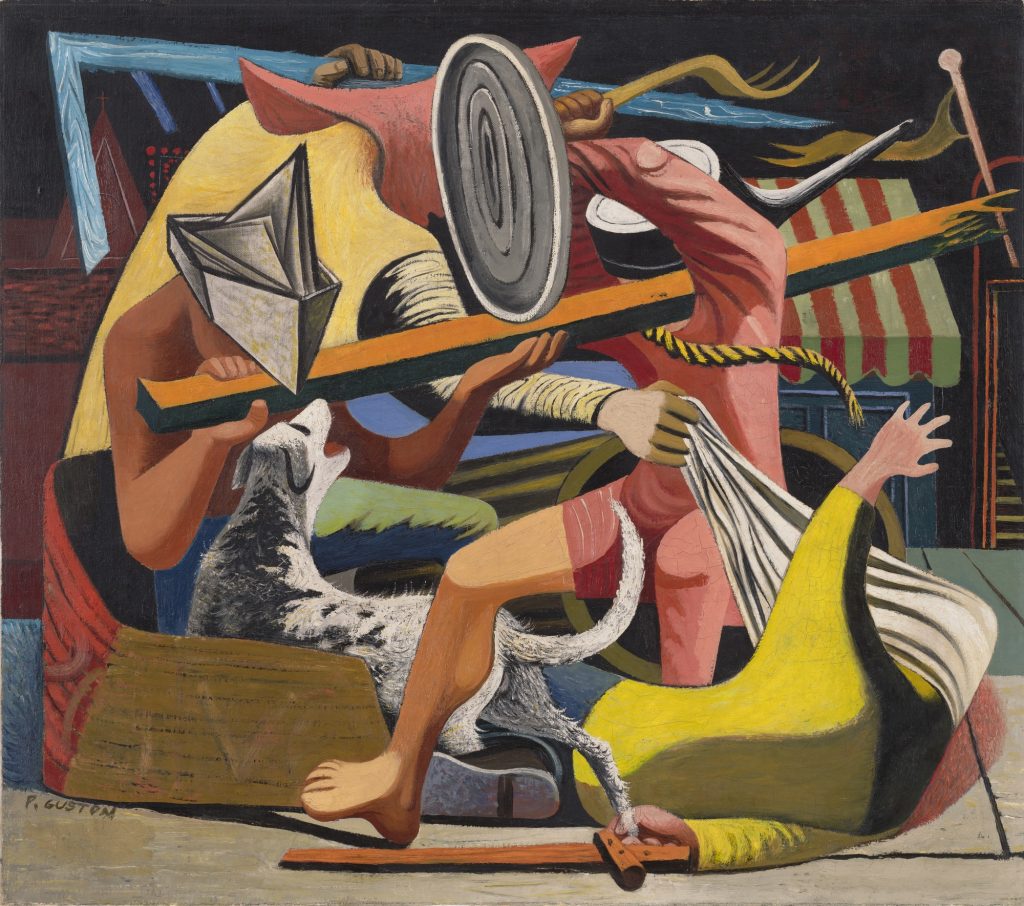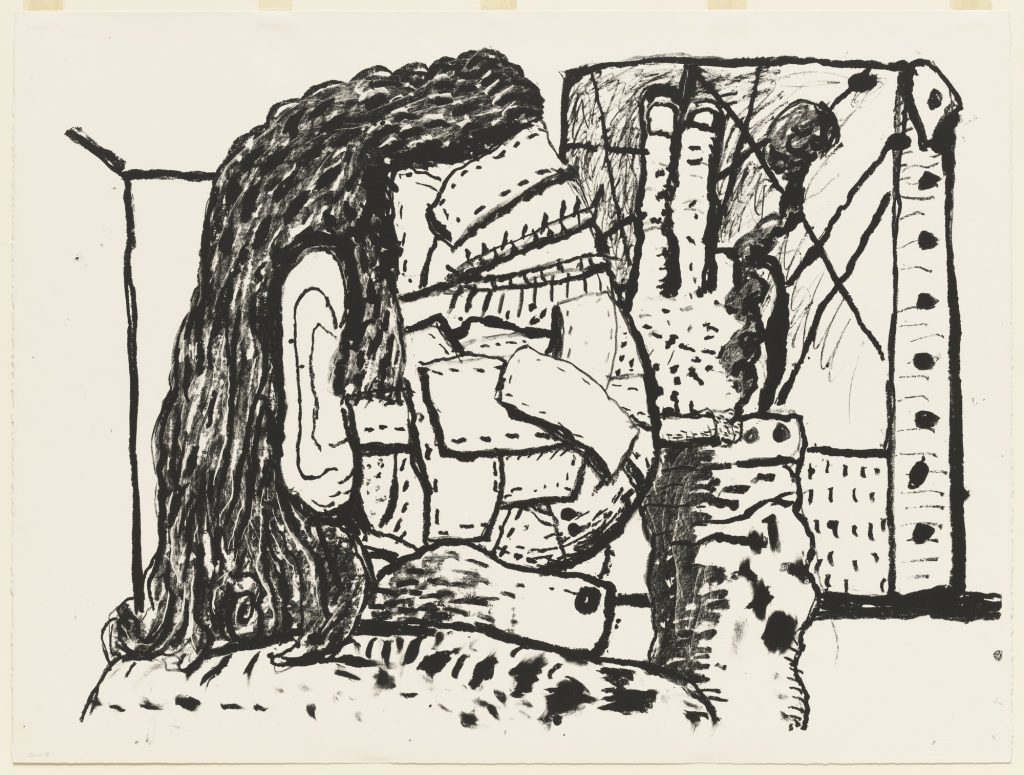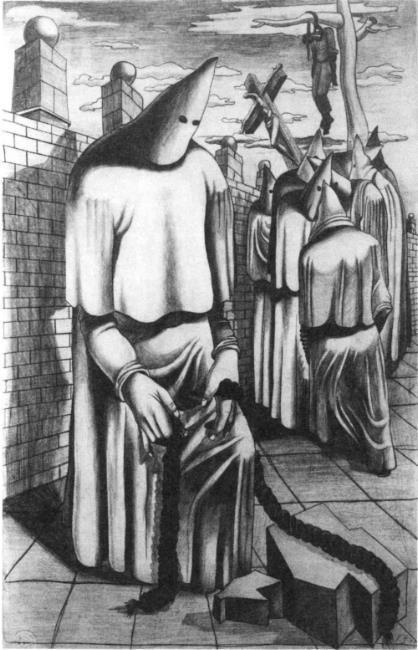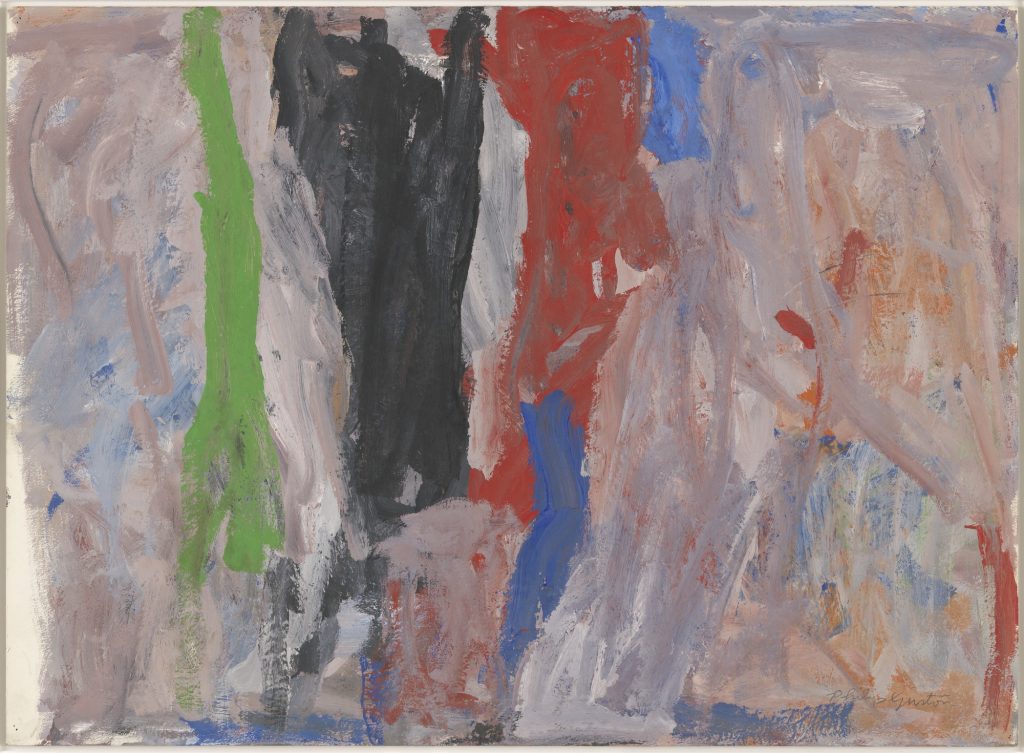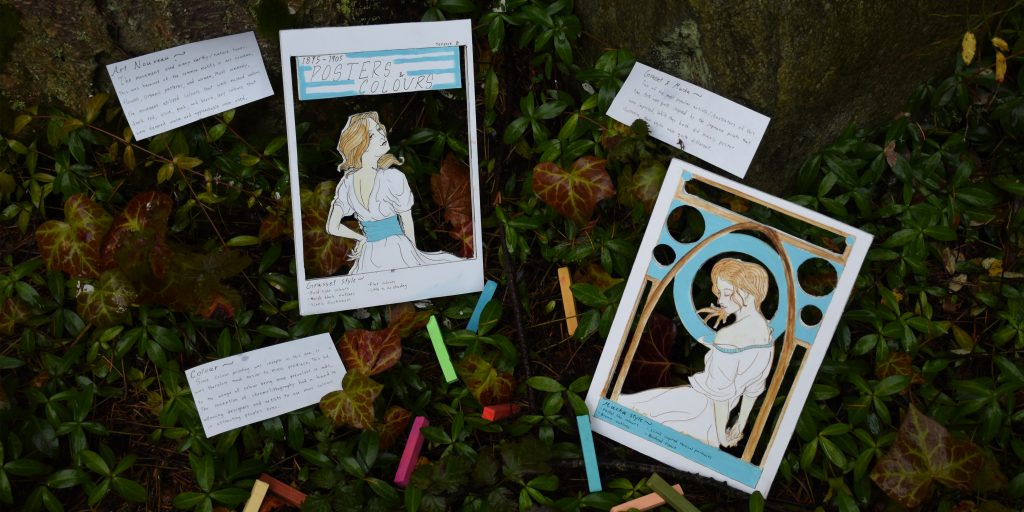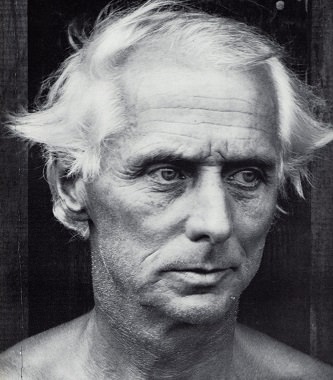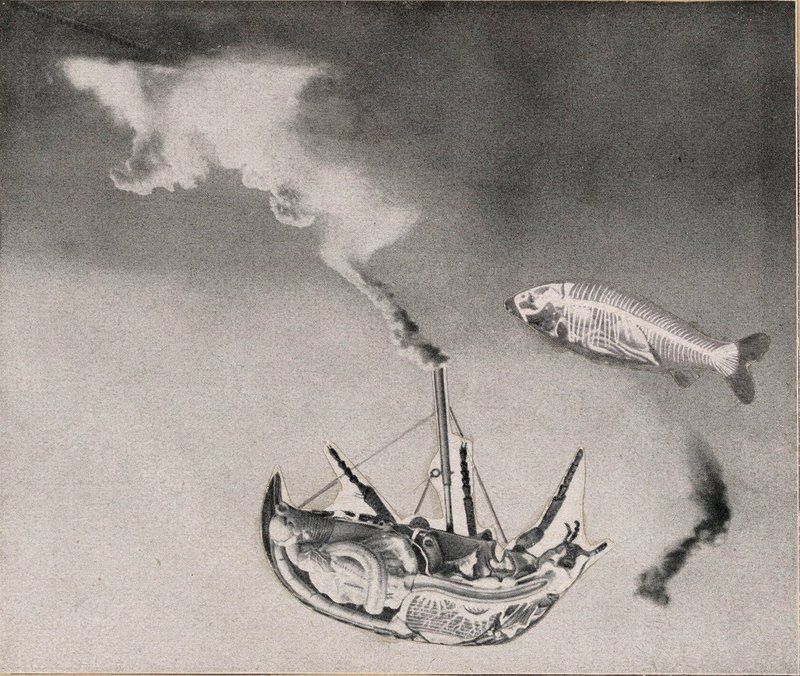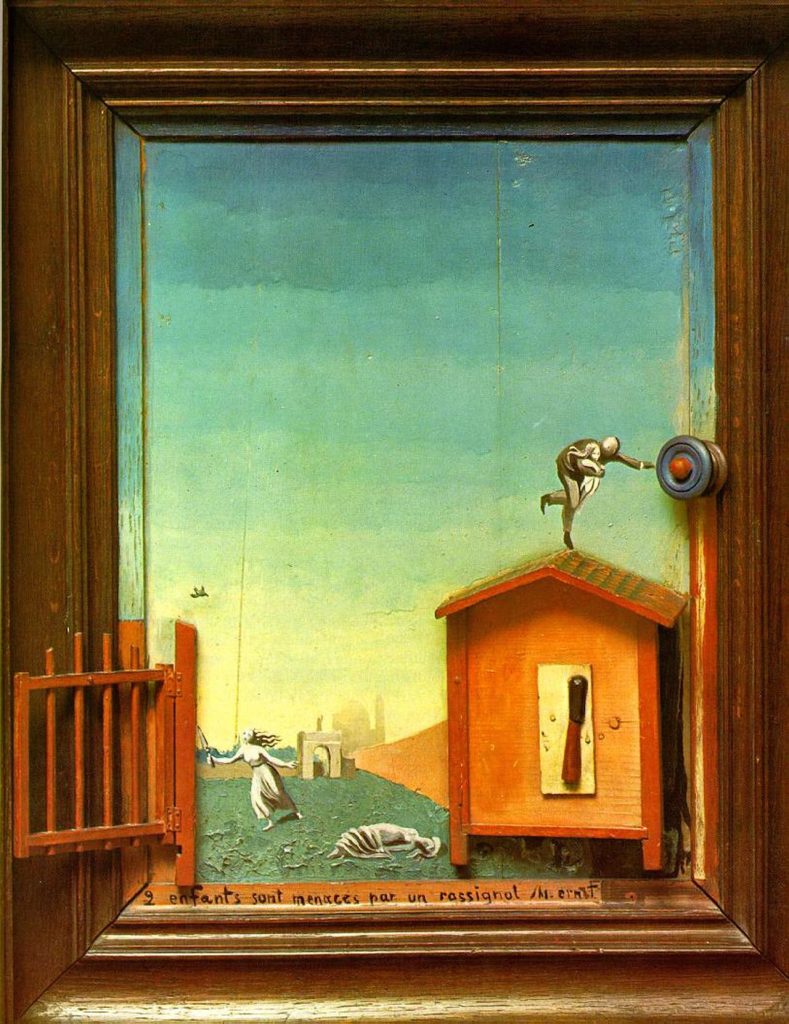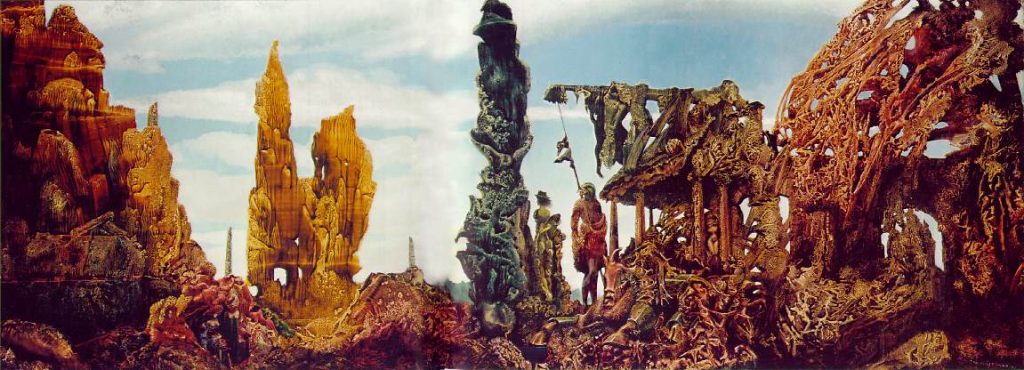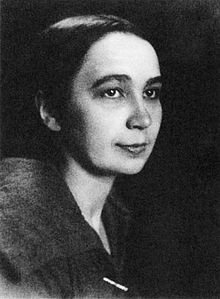
Natalia Goncharova’s work was contradictory and mixed elements from the sacred and profane. The subject matter of Goncharova’s work are mostly around day to day tasks and lives of rural workers, this being a contrast to her wealthy family and upbringings. The early inspirations of Goncharova’s are Cezanne’s brushstrokes, Fauvism’s Matisse colours and patterns, and the world view of Gauguin.
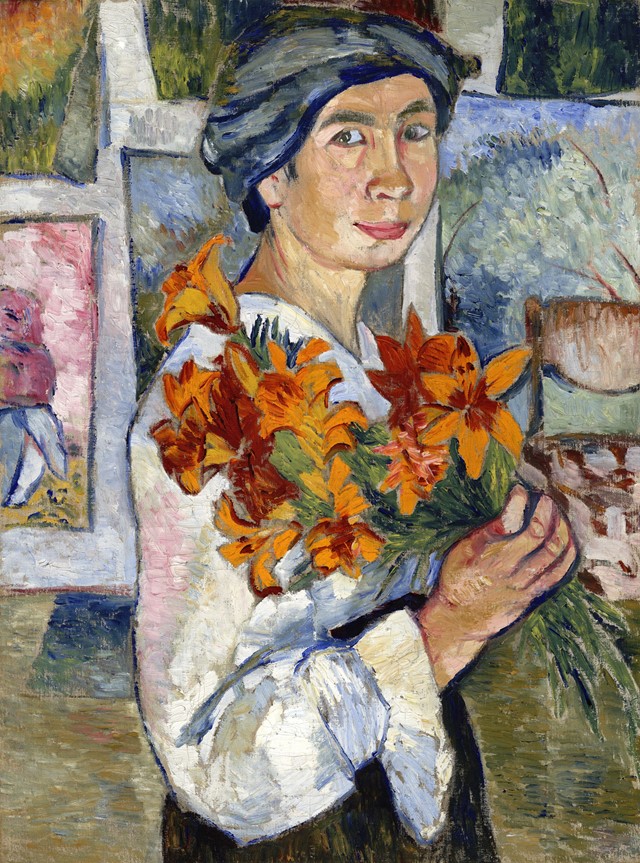
Her early work named “Self-Portrait with Yellow Lilies” (1907) gives off a very confident use of simplicity. Here, Goncharova uses a recurring theme of flowers as well as giving herself flowers and the studio background, giving the identity of a nature lover and an artist with bohemian experiences.
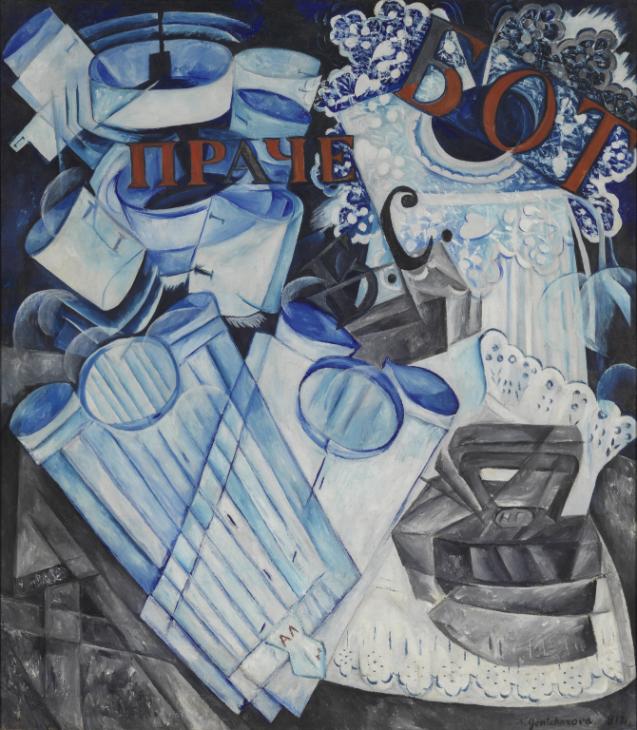
“Linen” (1913) was a piece using a cubist and futurist style and contains a lot of cool tones. The piece was a response to a very sexist comment by Marinetti who said he despised women. Goncharova decided to divide each gender’s clothes by their suggested labor but still contained a connection between the two genders.
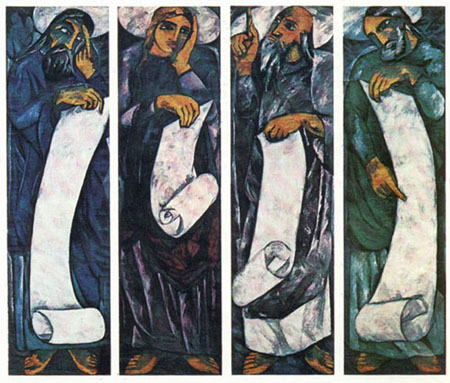
“The Evangelists” (1911) was a piece entirely dedicated to representing the four evangelists. The piece was met with outrage as usually the religious icon pieces were traditionally reserved for men. Goncharova also wanted to create an icon for her age as every age had a different style and history.
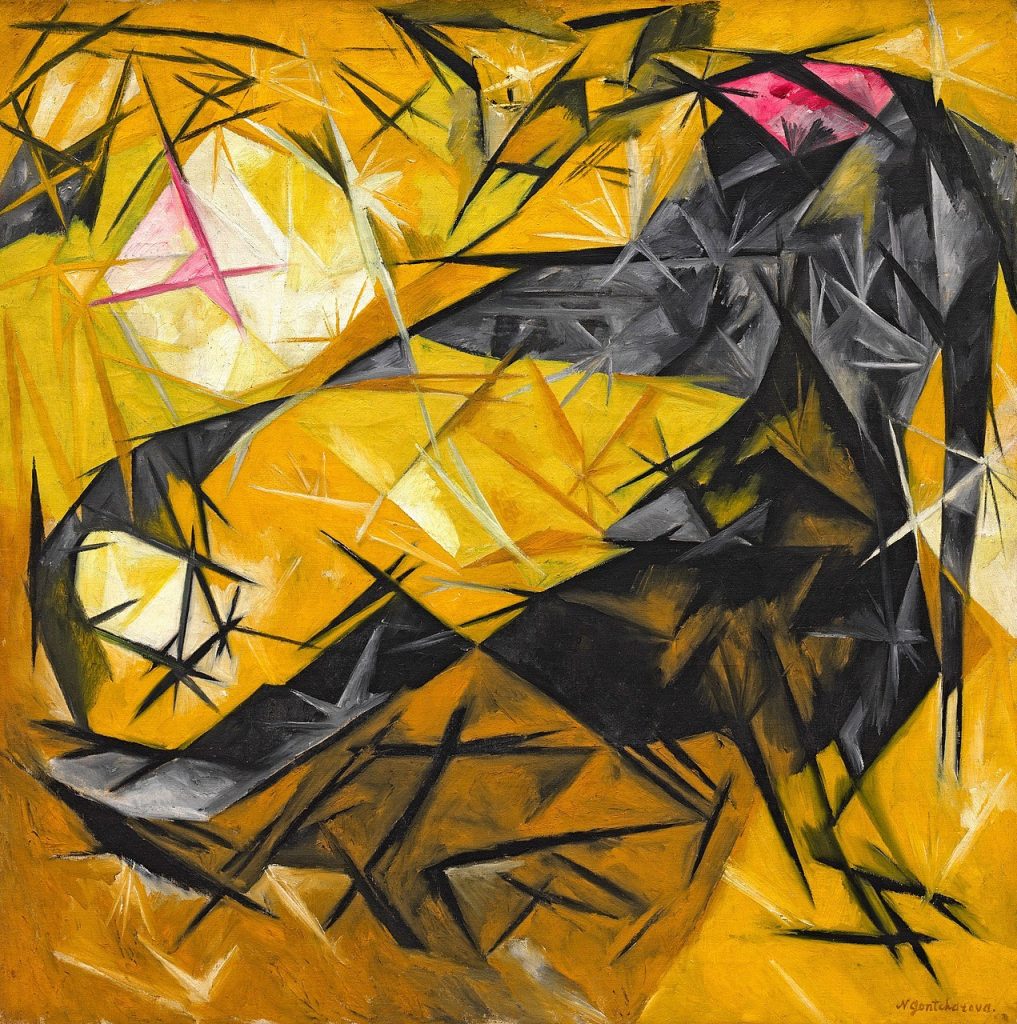
A piece that stands out is “Cats” (1913). It demonstrates the movement of Rayonism as well as Goncharova finding a new way of seeing. It creates a new form and includes Goncharova’s past influences of Futurism, Orphism, and Cubism.
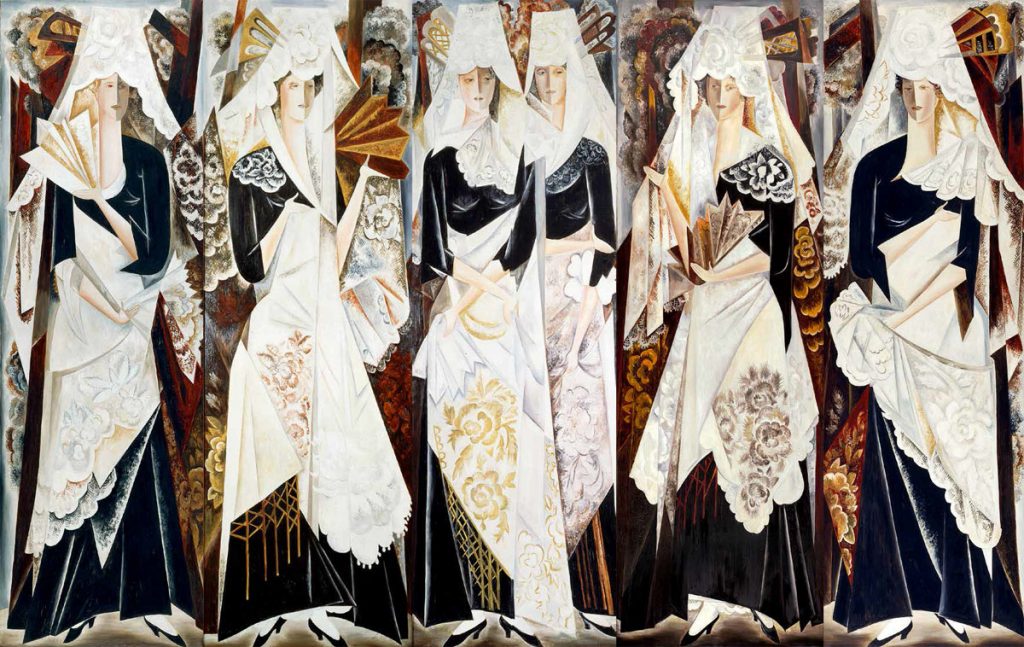
With “Spanish Women” (1923-24) Goncharova uses her costume design endeavors to create her famous polyptych. The piece holds some cubist elements as seen with the faces of the women. Goncharova painted her figures with towering presence which asserts dominance in her piece.
Sources:
- https://www.theartstory.org/artist/goncharova-natalia/
- https://www.theartstory.org/artist/goncharova-natalia/artworks/


